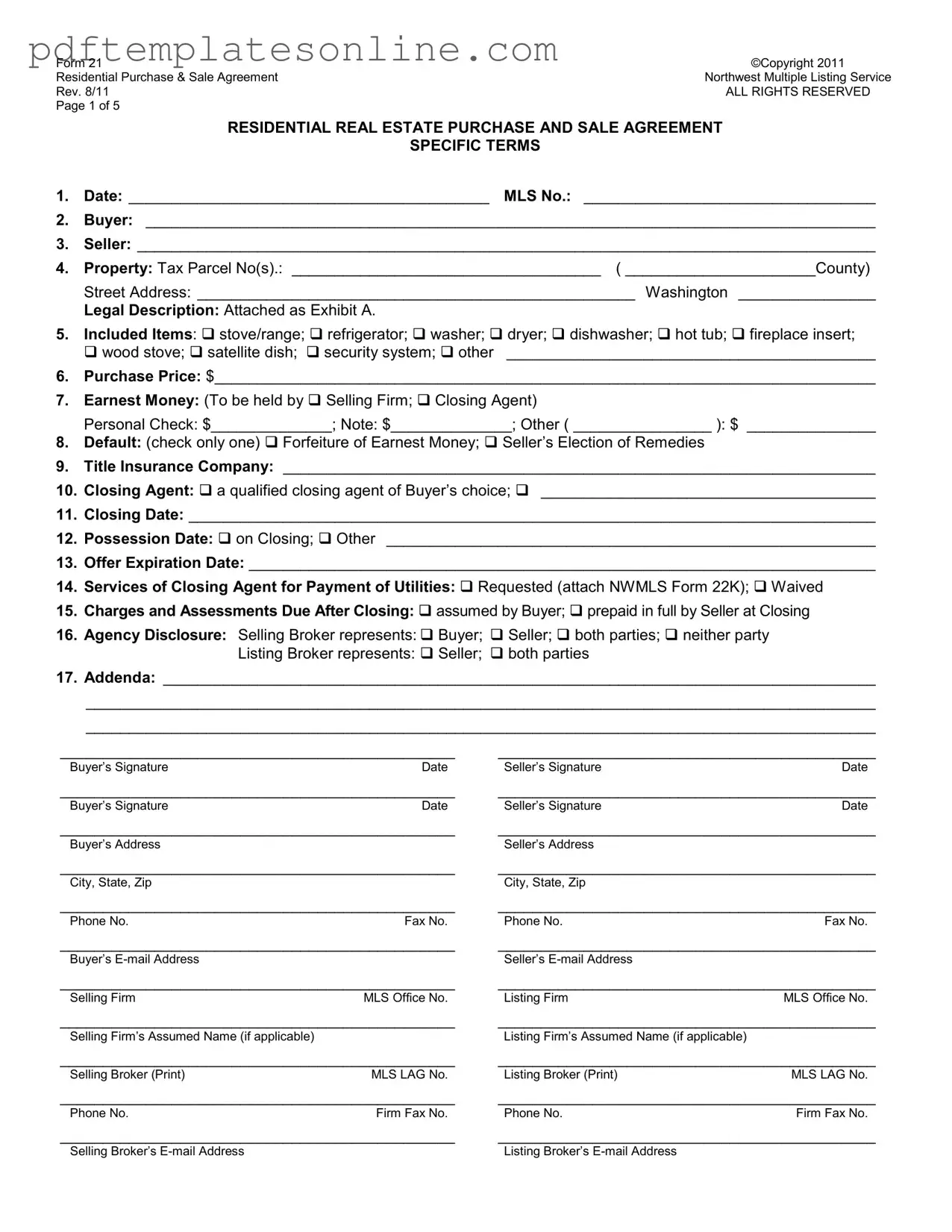Filling out the Nwmls 21 form can be a straightforward process, but several common mistakes can lead to complications. One major error is failing to provide complete and accurate information in the buyer and seller sections. Incomplete names, addresses, or contact details can cause delays in communication and processing. Always double-check that all fields are filled out correctly to avoid any misunderstandings.
Another frequent oversight occurs in the property description. Buyers and sellers sometimes neglect to include the correct tax parcel number or street address. This information is crucial for identifying the property in question. Without it, the agreement may not be enforceable, leading to potential disputes later on.
Many people also make the mistake of not specifying included items. The section for included items should clearly list any appliances or fixtures that are part of the sale. If this section is left blank or filled out incorrectly, it may lead to disagreements over what is included in the sale, causing frustration for both parties.
Additionally, errors in the earnest money section are common. Buyers often forget to specify the amount or the party holding the earnest money. This can create confusion regarding who is responsible for handling the funds and can complicate the closing process.
Another mistake involves the closing date. Buyers and sellers sometimes leave this field blank or fail to agree on a date. A missing or ambiguous closing date can lead to disputes and delays, as both parties may have different expectations about when the transaction will be finalized.
Misunderstanding the default options is also a common issue. Buyers may not check the appropriate box for the default terms, which can lead to confusion about the consequences of failing to fulfill the agreement. Understanding these terms is essential for both parties to avoid potential legal issues down the line.
Lastly, failing to sign and date the agreement correctly is a significant mistake. All parties must provide their signatures and the corresponding dates in the designated areas. Without proper signatures, the agreement may not be legally binding, leaving both parties vulnerable to potential disputes.
